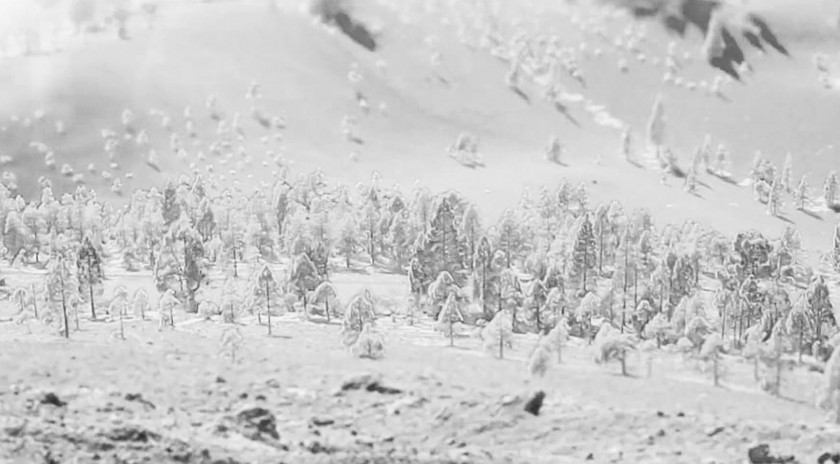„Eolo“ ist der italienische Name für den griechischen Gott der Winde, Aiolus. Auf La Palma, einer der kanarischen Inseln, treiben Passatwinde Wolkenfelder über die vulkanischen Berge und sorgen für eine sich ständig verändernde Bewegung des Wolkennebels. Zeitrafferaufnahmen solcher Wolkenbewegungen sind in dieser Videoarbeit für das italieniesche Netlabel Galaverna zu einem Kanon geschnitten, dessen Vokalspuren durch windartige Verfremdungen die Atmosphäre auf den Gipfeln La Palmas einfangen. Gesungen hat den Kanon Almut Kühne.
Als freier Download auf Galaverna veröffentlicht am 21. März 2013.
Eolo ist the Italian name for Aeolus, the ruler of the wind in Greek mythology. On the Spanish Island La Palma, part of the Canary Islands, trade winds carry a constant stream of clouds over the steep mountains and volcanos of the inland, forcing the clouds into erratic movements. In this video work, time lapse recordings of those cloud movements are set against a vocal canon sang by German singer Almut Kühne.
The song was released as a free download at the netlabel Galaverna on March, 21st, 2013. Video download is available at Vimeo.
Galaverna writes:
With “Eolo”, by Andreas Bick, Galaverna moves from exclusively sound territories to intrude in the audio-visual for the first time, starting a work of exploration, according to what declared by its essential mission. Exactly a year ago, Galaverna sprouted up providing a multifaceted approach to sounds; this work will continue in the upcoming months, expecially with Galaverna’s new home release, which will also offer glances into literature, photography and documentary film.
It’s up to the German sound artist Andreas Bick to inaugurate this newchapter in the young history of the digital platform run by Enrico Coniglio, Leandro Pisano and Lorenzo Isacco. Bick intend to do so with a work dedicated to the power of the wind (nomen omen) captured during a field trip in the Canary Islands, in autumn 2010. The movements of the clouds, driven wind-powered, and the visual changes of the landscape set in lava shades of the mountain skyline, all of these elements become the subject of an investigation that combines the evocative kinetic asynchronous rhythm of the time lapse with the singing voice of Almut Kühne.
Andreas Bick, known for its multifaceted approach to sound, approached in various forms (sound art, electroacoustic composition, soundtrack, choreography, radio art) and he is also known for his extensive theoretical essays ranging from hip-hop to radio drama. Of late he received awards not only from the audience, but also by critics and specialised press, providing further evidence his eclecticism.


